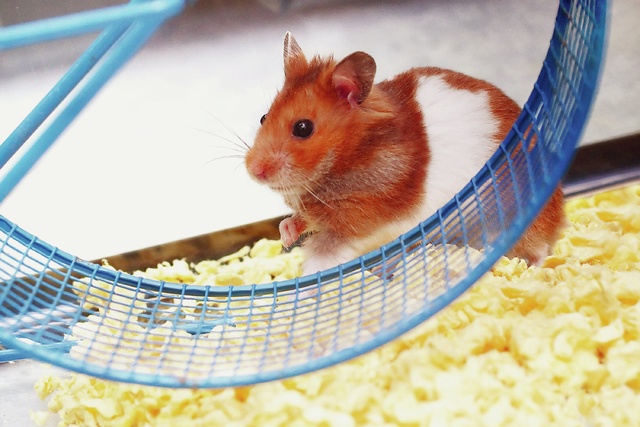The Bonneville Power Administration announced earlier this week that it was canceling all hydropower delivery to the San Juans due to the high number of micro breweries in the area who are in desperate need of water to produce more beer. Seeking an immediate, affordable source of locally generated power, OPALCO turned to the genius idea of technician Danny Herbert: Hamsters.
Hamsters are “highly motivated to run in wheels; it is not uncommon to record distances of 5.6 miles being run in one night,” according to (who else) Wikipedia. OPALCO plans to harness the mechanical bioenergy created when these furry little guys run on their wheels, all night, every night.
And, while they make crappy little pets (local mom of four Amber Kleine said her children’s hamster “ran like two marathons a night” and only lasted two days in their household before being given away) these beady-eyed rodents are already proving their worth in the world of energy production as found by Georgia University’s Nano Research Group, who have “proven that the concept is sound by capturing a running hamster’s biomechanical energy,” they announced on their website. The trick is to track watt-hours per hamster-mile (wH/hM), according to the science geeks at otherpower.com.
Approximately 22 Winter White Russian Dwarf hamsters running an average of three to four hours per night on tiny handmade MacGyvered-up wheels are needed to match the power output of an AA battery. At this rate OPALCO will need to employ about 84,000 hamsters per year to keep up with the electrical demands made by energy sucking islanders and their video game-addicted offspring in Friday Harbor alone. Lopez Island, with its high number of “off the grid” hippies should require a few thousand less.
“They eat very little,” said Theresa Haynie, OPALCO Communication Specialist, “And since Danny has so graciously offered to build hamster employee housing on his property the overhead should be really quite small.”
Opponents of the project are concerned that since a hamster lifespan is only two years a rodent cemetery may be an added cost to taxpayers. To that end Herbert is allegedly working with the owners of Shark World, the new attraction being installed spring of 2017 in Friday Harbor to contract out deceased hamsters as shark food. This will save OPALCO from not only having to dig hundreds of tiny little graves but also from having to hold shoebox drives in order to bury all of the dead hamsters.
“It’s really a much more environmentally conscious option,” said Herbert.
To donate your child’s neglected and/or unwanted hamster please call Danny Herbert at 360-HAM-WEEL.




